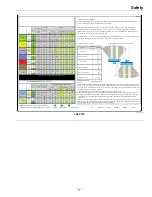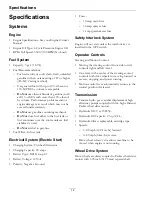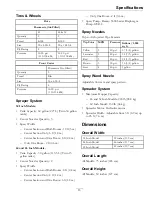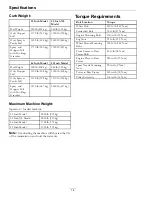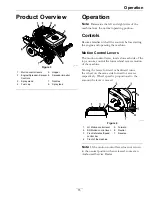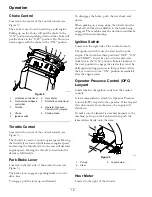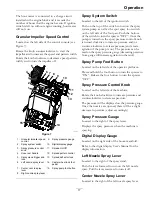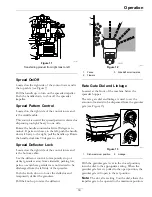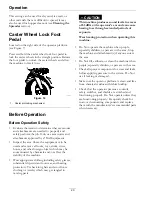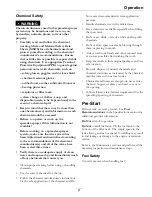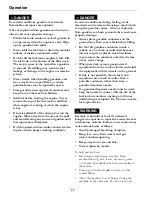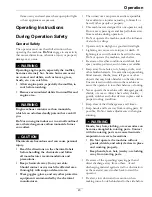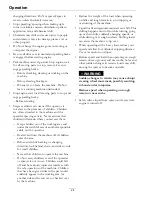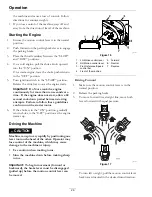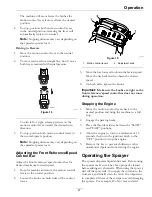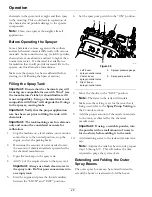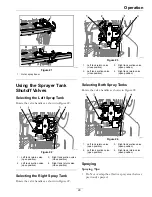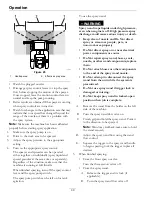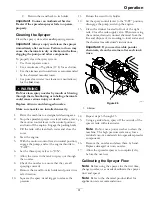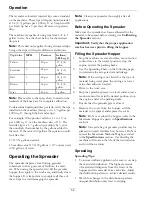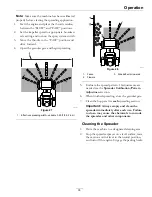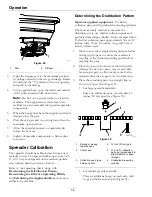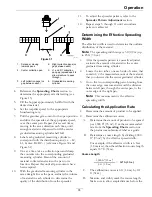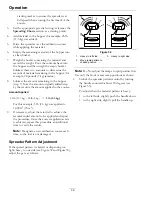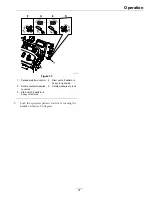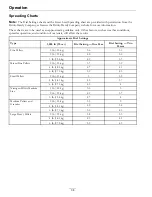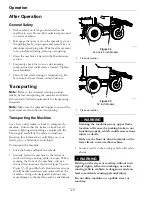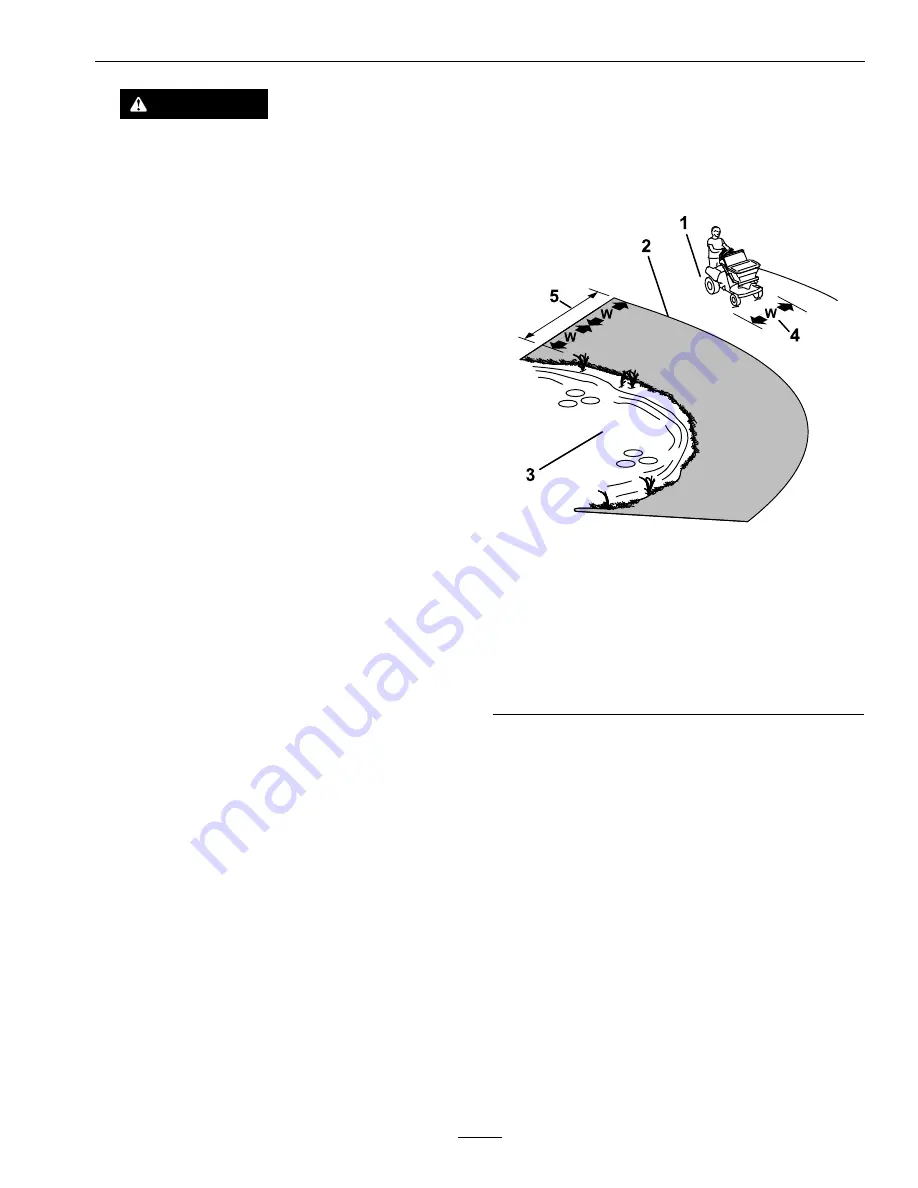
Operation
WARNING
Spray wand traps liquids under high pressure,
even when engine is off. High pressure spray
discharge could cause serious injury or death.
•
Keep clear of nozzle and Do Not direct
spray or stream at people, pets, or
non-work area property.
•
Do Not direct spray on or near electrical
power components or source.
•
Do Not repair spray wand, hoses, seals,
nozzle, or other wand components; replace
them.
•
Do Not attach hoses or other components
to the end of the spray wand nozzle.
•
Do Not attempt to disconnect the spray
wand from the machine while the system
is pressurized.
•
Do Not use spray wand if trigger lock is
damaged or missing.
•
Do Not keep spray wand in locked-open
position when job is complete.
•
When draining or relieving system, Do Not let
anyone stand in front of nozzles and Do Not
drain on a person’s feet.
Slope Safety
•
Slopes are a major factor related to loss of control
and rollover accidents, which can result in severe
injury or death. The operator is responsible for
safe slope operation. Operating the machine on
any slope requires extra caution. Before using the
machine on a slope, the operator must:
– Review and understand the slope instructions
in the manual and on the machine.
– Evaluate the site conditions of the day to
determine if the slope is safe for machine
operation. Use common sense and good
judgment when performing this evaluation.
Changes in the terrain, such as moisture, can
quickly affect the operation of the machine
on a slope.
•
Operate across slopes, never up and down. Avoid
operation on excessively steep or wet slopes.
•
Identify hazards at the base of the slope. Do
not operate the machine near drop offs, ditches,
embankments, water or other hazards. The
machine could suddenly roll over if a wheel goes
over the edge or the edge collapses. Keep a safe
distance (twice the width of the machine) between
the machine and any hazard. Use a walk behind
machine or a hand held tool to operate in these
areas.
g222400
Figure 15
1.
Safe Zone — Use the machine here
2.
Danger Zone - Use a walk behind machine or a hand
held tool near drop offs, ditches, embankments, water
or other hazards.
3.
Water
4.
W=width of the machine
5.
Keep a safe distance (twice the width of the machine)
between the machine and any hazard.
•
Avoid starting, stopping or turning the machine
on slopes. Avoid making sudden changes in speed
or direction; turn slowly and gradually.
•
Do not operate a machine under any conditions
where traction, steering or stability is in question.
Be aware that operating the machine on wet grass,
across slopes or downhill may cause the machine
to lose traction. Loss of traction to the drive
wheels may result in sliding and a loss of braking
and steering. The machine can slide even if the
drive wheels are stopped.
•
Remove or mark obstacles such as ditches, holes,
ruts, bumps, rocks or other hidden hazards. Tall
grass can hide obstacles. Uneven terrain could
overturn the machine.
•
Use extra care while operating with accessories
or attachments. These can change the stability of
25

